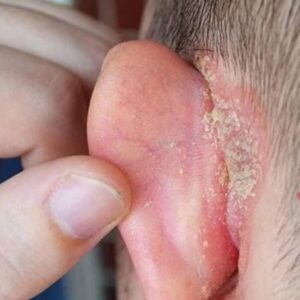Crocs have become a popular footwear choice for their comfort, lightness, and practicality. However, although they may seem harmless, several podiatry and foot health specialists warn that frequent use can have negative consequences.
Below, we explore the reasons why this footwear isn’t the best choice for everyday use and how it can affect your health.
Deceptive Comfort
Crocs are designed with a soft sole that provides an immediate feeling of comfort, but that same softness creates instability when walking. The lack of firm support can cause the foot to roll forward, causing excessive pressure on the toes and arch of the foot.
Problems that Frequent Use of Crocs Can Cause

Heel and Arch Pain
The lack of adequate support contributes to plantar fascia pain, a common condition known as plantar fasciitis.
Toe Deformities
Constant movement in shoes can lead to ingrown toenails, bunions, and hammertoes.
Postural Problems
Lack of stability impacts posture, which in the long term affects the knees, hips, and spine.
Increased Risk of Falls
The slippery sole and open design expose you to trips and accidents, especially on wet surfaces.
Poor Hygiene
Because these are closed-toe shoes with little ventilation, feet sweat more, increasing the risk of fungus and unpleasant odor.
Occasional, Not Daily Use
Experts recommend limiting the use of Crocs to specific times, such as:
Short walks at home.
Activities at the beach or pool.
Situations requiring lightweight, easy-to-clean footwear.
They should not be considered a substitute for orthopedic or extended-wear footwear.
Healthier Alternatives

If you’re looking for comfort without compromising the health of your feet, opt for:
Shoes with arch support that distributes weight well.
Ergonomic sandals with a snug fit.
Lightweight athletic shoes designed to provide cushioning and stability.
Conclusion
Although Crocs offer immediate comfort, they are not recommended for everyday wear. Their lack of support and stability can lead to long-term foot and posture problems. Wearing them in moderation and opting for healthier alternatives is the best way to maintain foot health without sacrificing practicality.





